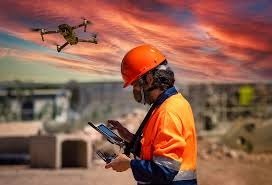Mining is one of the most lucrative yet hazardous occupations on earth. Safety for miners has always been considered a core issue. However, traditional practices are no longer effective for present-day challenges. Fortunately, technological innovations have stepped in. The whole innovation is changing mining safety as advanced tools and systems are being brought into practice that reduce risks and save lives. From automation to wearable technology, technology in mining is changing the way mining tasks are performed, making it much safer compared to what it used to be. In this article you will explore the role of technology in ensuring mining safety;
1. Advanced Monitoring Systems
IoT-powered monitoring systems are transforming mining safety. These are sensor-enabled systems deployed to monitor environmental conditions such as levels of different gases, temperature, and seismic activity. The findings, in real time, are relayed to a centralized dashboard to enable any urgent action to be taken. For instance, the early detection of hazardous gas leakage will ward off accidents and guarantee timely evacuation. These systems provide real-time insight into all the activities, reducing risks from underground mining operations.
2. Automation and Robotics
One of the biggest safety technology impacts on mining according to Queensland news is automation. Automation has introduced such aspects as autonomous vehicles and robotic machinery into high-risk tasks to minimize human exposure to danger. Driverless haul trucks, for example, negotiate challenging terrains without exposing the operators to danger. Robotics have become very instrumental, especially in the drilling and ore extraction stages, because these tasks need to be accurate and also ensure that human life is not compromised in any way. By having taken up manual operations at hazardous zones, automation now becomes the basis upon which modern mining depends.
3. Wearable Safety Technology
Mining safety has also become very inclusive of wearable gadgets. These include smart helmets and jackets with sensors for the heart rate and temperature of workers. These are very good at detecting toxins and environmental threats in toxic gases. They give data to alert workers and supervisory officers in real-time so actions can be very fast. Some of these wearables also include GPS tracking in case an operator in isolated areas needs rescue in cases of distress.
4. Data Analytics and Predictive Tools
Analytics and predictive modeling are helping the mining industry stay ahead of potential safety hazards. These tools find patterns and predict equipment failures or environmental risks from large volumes of historical data. For example, predictive maintenance can flag issues in machinery before those issues cause an accident. Geospatial data analytics helps identify unstable ground conditions. With such tools it’s easier to prevent incidents from happening.
5. Virtual and Augmented Reality
Virtual reality simulations let workers practice going through hazardous situations without actual risks. AR devices offer on-site assistance and display critical information superimposed in the real-world field of view. For example, AR can walk a worker through equipment repairs and highlight potential safety concerns. They will make sure that the miners are more prepared to face the situation.
According to Queensland news, technology is at the helm of improving mining safety, reducing risks, and saving lives through advanced monitoring systems, wearable tech, and VR training-these all help change how the industry works. Mining companies ensure a safer working environment by integrating technology into other procedures and regulations without losing much in the efficiency of operations. As developments go on, the mining industry is well placed to establish new benchmarks regarding safety, thus accomplishing hazardous responsibilities in more feasible and safe ways for the workers.






